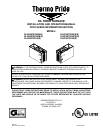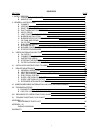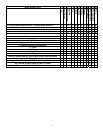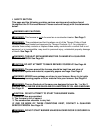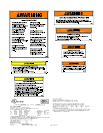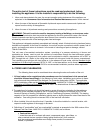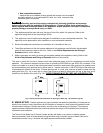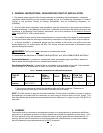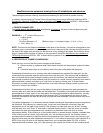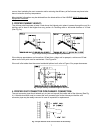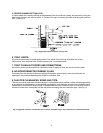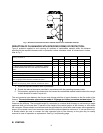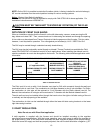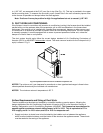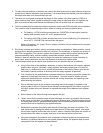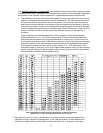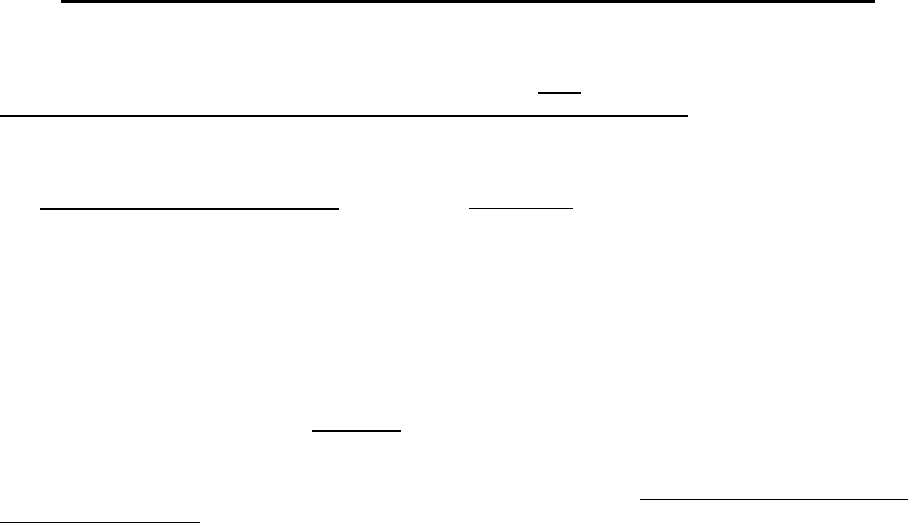
6
Qualified service personnel must perform all installations and services.
The following are common chimney requirements necessary for the furnace to operate correctly:
A masonry chimney serving a Thermo Pride oil fired furnace must
comply with local codes and NFPA
Standard for Chimneys, Fireplaces, Vents, and Solid Fuel Burning Appliances (NFPA211-1996 or latest
edition).
1. PROPER CHIMNEY SIZE:
The inside area of the chimney liner
should equal, at minimum, the area of the vent pipe exiting the
furnace.
EXAMPLE: π x r
2
= Area of Pipe (sq. in.)
r = radius of pipe
π = 3.1417
Flue Pipe Diameter = 6" [Radius of pipe = ½ diameter of pipe = ½ (6 in.) = 3in.]
π x 3
2
= 28 sq. in.
NOTE: This formula calculates the minimum
inside area of the chimney. If more than one appliance vent
connector pipe is connected to the chimney, the minimum inside area of the chimney should be equal to
the area of the largest vent pipe plus one half the area of any additional vent pipes. If the chimney is too
large or condensation has been a problem in the past refer to the NFPA Standard for the Installation of
Oil Burning Equipment (NFPA31-1997 or latest edition) Appendix E for proper liner sizing.
2. PREVENTION OF CHIMNEY CONDENSING:
Stack gas may do one of two things as it escapes up the chimney:
A. Remain entirely in a gaseous state if the internal chimney wall temperature is above the dew
point
B. Condense water vapor on the chimney walls if they are chilled below the dew point.
Condensing will always occur on chimney walls whose temperatures are below the dew point, but the
condensate may evaporate when the walls warm above the dew point. If the chimney wall temperature
does not exceed the dew point during the heating cycle of the furnace, the moisture may accumulate in
large enough quantities to cause problems such as corrosion of a metal chimney (especially plain steel or
galvanized steel), erosion and break up of a tile liner in a masonry chimney and, in severe cases,
corrosion of the heat exchanger. Condensate also could enter the home through cracks or joints in the
chimney in a worse case situation.
Condensation most likely will not occur at the bottom of the chimney because the stack gas heats the
chimney walls as it rises and the bottom will be heated first. This heating of the walls will cause the stack
gas temperature to drop, which in turn may reduce the stack gas temperature below dew point, causing
condensation to appear on the upper part of the chimney first. This condensation may then run down
inside the chimney and drip back as far as the flue pipe and heat exchanger, where corrosion may occur,
if not treated.
To prevent condensation, it is necessary that the internal chimney wall temperature always be kept above
the dew point. If the chimney is a masonry type, it may have to be fitted with a flue liner, when the
temperature loss is too great for the furnace. If the chimney is a metal type, then an "all fuel" chimney
must be used, such as a Class "A" triple wall or insulated metal chimney. A liner will act as an insulator
and reduce the stack gas temperature loss. Insulation may be added around the liner for further
temperature stability. If the chimney is on the home's exterior or passes through a sizable, unheated area
of the building, such as a porch, high ceiling attic, etc., and condensing occurs, the chimney must be
insulated around its exterior to help the flue hold its temperature. Also, check to see if the chimney is too
large for the furnace and other appliances connected to it. If so, reduce to proper size (see Appendix E of
NFPA31) by lining. Be sure to use stainless steel liners, such as stainless types 430, 304, or for the
toughest corrosion problems, type 316. If the chimney is the correct size for the unit and condensing still



